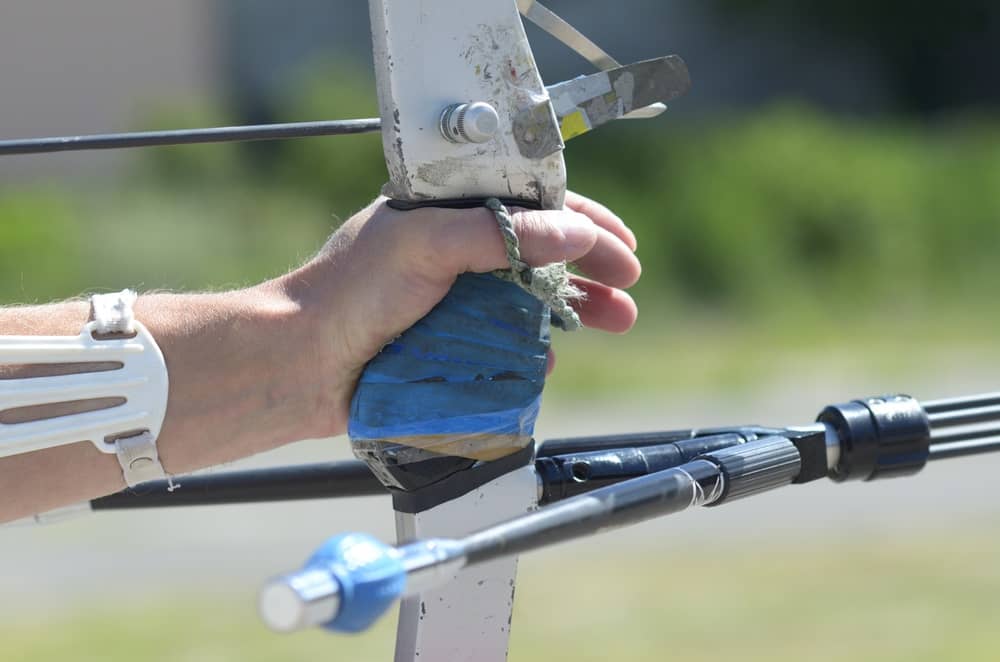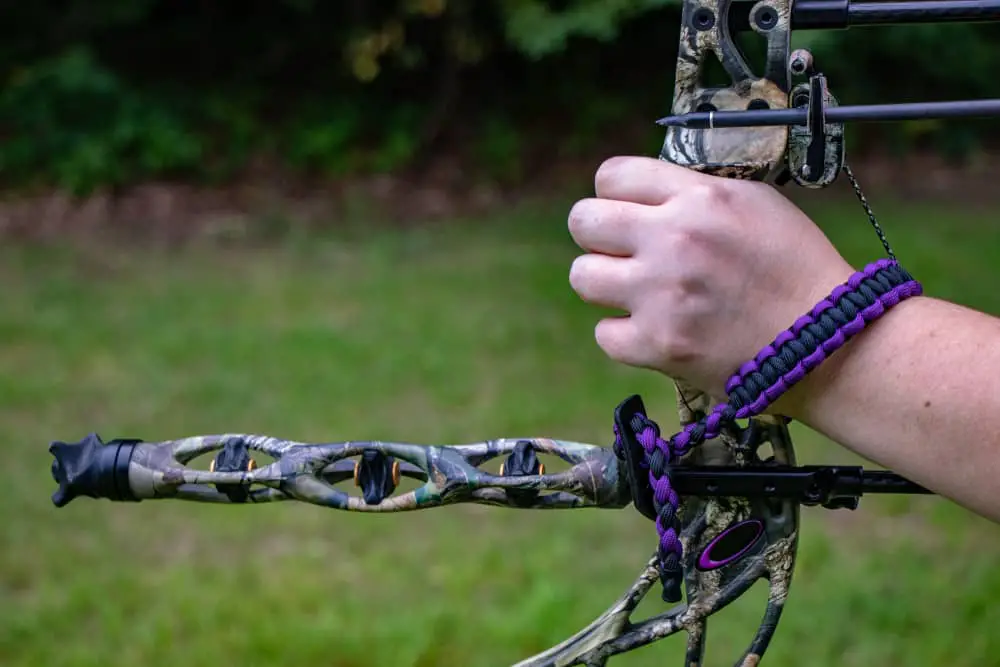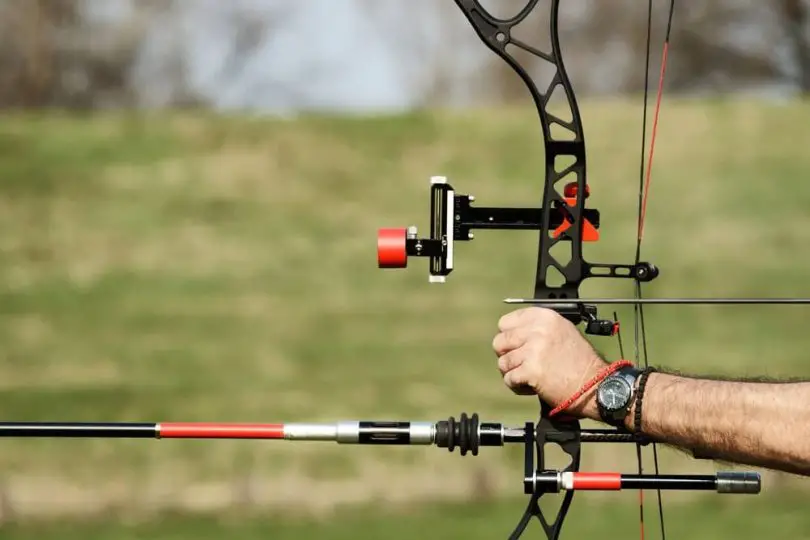When you improve your archery skill, there will be a moment when you will want to manage every little aspect of your shots.
That may even manifest in the setup of your bow whether it be the crossbow, the compound bow, or the longbow.
Stabilizers are one main element you should consider to have the stability you need for optimum precision.
An unstable bow may need to be pushed into a fixed and vertical position by applying pressure on the handle.
In particular, shortly after pulling the string, individuals with a comfortable grip could begin to slip to the right. That is why you should balance your bow with stabilizers.
How to Balance a Bow with Stabilizers: What to Expect

If all your bow shots are short, it may not be a big deal to balance a bow, but if you are attempting to improve your tournament shooting or to increase your performance while hunting, you may need to evaluate all the parameters.
A bow is optimal if it does not move, turn or rotate before or when the shot is made.
Now we are going to talk about how to balance your bow with stabilizers.
1. Consider What You Need to Look Out for in a Bow Stabilizer
You should first analyze the material that is used in manufacturing to figure out how effectively a stabilizer dampens vibration.
Although it depends on your style, rubber is the go-to component to which most archers attest. Sand and gel are other substances that stabilizers are made from.
Therefore, go to try many variations to make your bow perform the right way.
To enhance your aiming, you should add or subtract weights from the stabilizer. Always evaluate and analyze a stabilizer’s front end.
That’s where the extra weight is located. Evaluating the weight first will give you a fair measure of how it would feel once the bow is mounted to the stabilizer.
Checking the length of a stabilizer would also help you to decide whether it will aid you as a bowman. You’d want to concentrate more on balance for target shooting.
The longer your stabilizer is, the more balanced your bow would be.
If you’re chasing animals in the forest, you’d like the one that would still offer you flexibility without compensating control.
The ability to be modified is another essential thing to search for in a stabilizer.
Based on if you are a DIY archer, it could just be the feature you would like on your bow to have a stabilizer that is easy to customize.
2. Put a Stabilizer
We will break down crucial aspects in this section on what characterizes an efficient stabilizer.
Your stabilizer needs to be as lightweight as air, and much of its weight needs to be removed as far from your bow as necessary.
With virtually no flex, the stabilizer must also be solid.
Limber rods enable the bow to pass through the rod’s adjustable range until the pressure of the stabilizer weights could have the greatest influence on the rotation.
You can go to a sidebar if you’d like more weight, but you don’t want to remove your stabilizer at all.
They are defined as side rods, which help add additional weight to increase the stability of a bow.
You can even need several rods to get the ideal bow weight, based on how you intend to use your bow.
Once more, your opinion matters, so go ahead and try if you like these bars.
3. Transitional and Rotational Resistance
The bow stabilizers give more “moments of inertia” (MOI) to your bow.
The MOI factor is simply how much rotation an item can withstand. Strictly speaking, the larger the MOI, the more torque-resistant the bow is.
We point that out since you will have to have the appropriate amount of resistance to make your bow effective.
The lower the resistance within your bow, the more competent you have to be to score your shots.
You would like a bow that gives you the maximum amount of resistance.
Therefore, let’s quickly address whether a stabilizer creates the right MOI to make things worthwhile:
Transitional Resistance – This is the force that makes your bow as you fire.
However, that doesn’t mean you’re going to reach your mark this way.
You’ve to depend on luck, your strength, and stamina to hit the archery target with this energy.
Rotational Resistance – Through this type of resistance, available energy is spread effectively instead.
You can both manage and focus the bow at almost the same time by avoiding the tension.
That’s how stabilizers function, as subtle as they are.
4. Vertical Tilt and Add Rotational Resistance
The side rod will assist in vertical tilt and balance the front rod torque. A better balance helps a big rig seem lighter. Side rods assist you with the curl of your hand.
That’s because the axis of your arm is reversed, so it can produce rotational resistance.
They can even adjust your front rod’s load so you can recover the balance you lacked when you placed the front rod on.
To counteract the leverage of the long rod, you would like to apply weight to the back rod.
That weight may be divided into two rods or placed all of them on a single rod. Whatever sounds appropriate for you works just fine.
5. Balance the Weight of Your Front Rod
You can use front rods while firing to make the bow go less backward.
By keeping the bow less probable to spin across the grip, they assist you. Your bow may want to shift forward after you attach a front rod.
By inserting a rod that moves backward you can balance this since this would essentially make the bow lean backward because the two forces eliminate each other.
The flexible body and a heavy front end are widely accepted stability configurations for your bow.
The vibration reduction that you would get if you have a rubber dampener and a heavy front end is significant.
6. For More Balance
The proper stabilizer weight would make your bow considerably heavier. And the correct “heavy” level is a bow that you could still manage.
The weight applied would make the bow more balanced. That indicates you won’t be able to shake your bow from left to right easily.
That does matter whenever you want to remain concentrated on your mark. Having the right stabilizer would not only provide you with a stable bow.
Importantly, possessing a bow you can control properly will allow you to make every shot count.
7. For Less Vibration
Not only that the right stabilizer will bring your bow some much necessary weight, but will also help to decrease vibration.
Shooting an arrow whether the best one or a common one generates latent energy contained in the bowstring.
Sure, energy is transmitted to the launched arrow, but it would transfer the majority of the energy to your equipment.
If you are not ready, it can be exhausting to take the brunt of this energy.
Assuming that you still have your natural endurance, the odds are that after a prolonged shooting session, you’re guaranteed to have an unstable bow.
And that is where stabilizers excel, as you will be able to handle more shots by aiding you to decreasing generated vibration.
8. Case of Sound Produced
Another important element of stabilizers is how they can weaken the sound. In certain cases, there may be a tendency for unstable bows to make more noise.
And if you are a marksman out in the wilderness, it is never a good idea to have a loud bow.
So, in essence, a stabilizer would also quiet out the sound by reducing vibration.
Consider having a string silencer that can minimize string sound by as much as 95 percent to help decrease the noise.
That increases your odds of having a good initial shot at the prey you hunt.
It’s Time to Wrap Up
One of the most significant decisions you will make in your journey as an archer is purchasing a stabilizer.
Purchasing a poorly constructed stabilizer that does not suit your needs is equivalent to purchasing nothing at all. So, consider getting something that counts.

Also, if you wonder whether or not you require a stabilizer, you should judge it from your results.
If you can’t shoot things at a certain range, why not give a bow stabilizer a try to see if you can boost it?
All and all, a stabilizer is a smart purchase for you, and having one is recommended.
FAQs
1. How Long Should a Hunting Stabilizer Be?
Ans. The overall length should be about 12 inches for a hunting stabilizer. Anything more than that is unnecessary in the outdoors and is intended for target shooting only.
Shorter stabilizers prioritize vibration lowering and silencing, while longer versions significantly boost aiming and precision.
2. How Much Should a Bow Stabilizer Weigh?
Ans. It is advised to start with a 30 inches front bar with 6 oz of weight and a 12 inches rear bar with 15 oz of weight when beginning as a novice shooter.
Use your judgment as to where you should start with the weight of stabilizers if you are considering how to mount a stabilizer for a woman or child, but it is advised to stick close to these amounts.








Leave a Comment